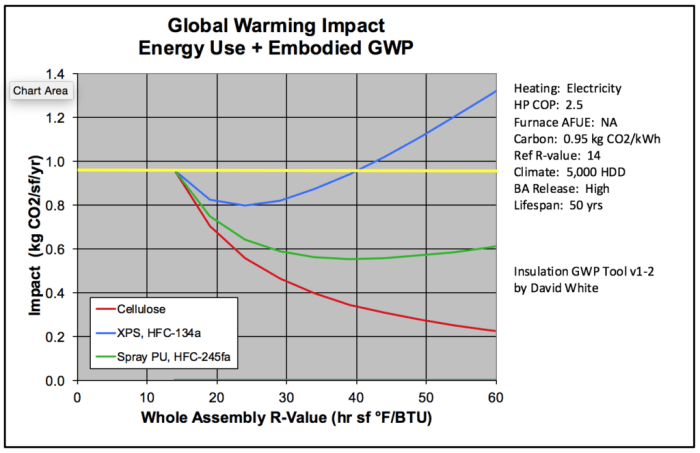Dive into the world of insulated siding and its significant influence on global energy bills. Discover the key aspects of this innovative solution that revolutionizes traditional siding materials, offering unparalleled benefits and cost-saving opportunities.
Explore how insulated siding contributes to energy efficiency and learn about its widespread applications across different climate zones worldwide. Uncover the secrets behind the long-term cost savings associated with insulated siding installation.
Introduction to Insulated Siding

Insulated siding is a type of exterior cladding material that is designed to provide enhanced insulation for buildings. It works by incorporating a layer of insulation material, such as foam, behind the siding panels, which helps to reduce heat loss in the winter and heat gain in the summer.
Different Types of Insulated Siding
- Vinyl Insulated Siding: This type of insulated siding is made of vinyl material and is one of the most popular choices due to its durability and low maintenance requirements.
- Fiber Cement Insulated Siding: Fiber cement siding is known for its strength and resistance to fire, insects, and rot. The addition of insulation to this type of siding enhances its energy efficiency.
- Wood Insulated Siding: Wood siding offers a natural and traditional look to a building. When insulated, it provides both aesthetic appeal and energy-saving benefits.
Benefits of Using Insulated Siding
- Improved Energy Efficiency: Insulated siding helps to reduce energy consumption by maintaining a more consistent indoor temperature, leading to lower heating and cooling costs.
- Enhanced Comfort: By minimizing heat transfer through the walls, insulated siding creates a more comfortable living environment with fewer drafts and temperature fluctuations.
- Noise Reduction: The added insulation in insulated siding also helps to dampen outdoor noise, providing a quieter indoor space.
- Increased Durability: Insulated siding can offer better protection against the elements, such as moisture and UV exposure, leading to a longer lifespan for the building exterior.
Energy Efficiency Impact

Insulated siding plays a crucial role in reducing energy consumption in buildings by providing an extra layer of insulation to the exterior walls. This helps in maintaining indoor temperatures more efficiently, resulting in lower energy bills and reduced environmental impact.
Reduction in Energy Consumption
- Insulated siding helps to minimize heat loss during the winter and heat gain during the summer, creating a more stable indoor environment.
- By reducing the workload on heating and cooling systems, insulated siding can lead to significant energy savings over time.
- Studies have shown that buildings with insulated siding can reduce energy consumption by up to 20% compared to those with traditional siding materials.
Maintaining Indoor Temperatures
- Insulated siding acts as a barrier against external temperature fluctuations, helping to keep indoor spaces comfortable throughout the year.
- By preventing drafts and air leaks, insulated siding ensures that the heating and cooling systems operate more efficiently, maintaining consistent temperatures indoors.
- This can result in a more comfortable living or working environment for occupants while also reducing the need for constant adjustments to the thermostat.
Comparison with Non-Insulated Siding
- Non-insulated siding materials, such as vinyl or aluminum, offer minimal thermal resistance and are less effective in regulating indoor temperatures.
- Buildings with non-insulated siding tend to experience higher energy bills due to increased energy consumption for heating and cooling purposes.
- Compared to non-insulated siding options, insulated siding provides better insulation, leading to improved energy efficiency and cost savings over the long term.
Global Application of Insulated Siding
Insulated siding is a versatile building material that is used in various climate zones worldwide. Its energy-efficient properties make it a popular choice for countries aiming to reduce energy consumption and carbon emissions.
Usage in Different Climate Zones
- In colder climates, such as Canada, Scandinavia, and Russia, insulated siding helps to retain heat within buildings, reducing the need for constant heating during the winter months.
- In warmer climates, like Australia, Spain, and parts of the United States, insulated siding can help keep buildings cool by minimizing heat transfer from the exterior, thus reducing the reliance on air conditioning.
Countries Where Insulated Siding is Commonly Used
- United States: With a strong focus on energy efficiency, many homes in the U.S. utilize insulated siding to lower heating and cooling costs.
- Germany: Known for its commitment to sustainability, Germany has embraced insulated siding as a way to reduce energy consumption and combat climate change.
- Japan: In a country prone to natural disasters, insulated siding provides not only energy savings but also increased resilience to extreme weather events.
Environmental Impact of Widespread Adoption
Insulated siding offers significant environmental benefits when widely adopted. By reducing energy consumption for heating and cooling, it helps lower greenhouse gas emissions and mitigates the impact of climate change. Additionally, the longevity and durability of insulated siding materials contribute to sustainable building practices and reduce waste in the construction industry.
Cost Savings Analysis
Installing insulated siding can lead to significant long-term cost savings for homeowners. While the initial investment cost may be higher compared to traditional siding materials, the energy savings over time can outweigh the upfront expenses.
Comparison of Initial Investment Costs
- Insulated siding typically has a higher initial cost than traditional siding materials like vinyl or wood.
- However, the improved energy efficiency provided by insulated siding can result in lower monthly energy bills.
- Homeowners should consider the long-term savings potential when evaluating the initial investment in insulated siding.
Case Studies of Reduced Energy Bills
One case study conducted by a homeowner in a cold climate area showed a 20% reduction in heating costs after installing insulated siding.
- Another real-life example involved a homeowner in a hot climate region who experienced a 15% decrease in cooling expenses due to the insulation properties of the siding.
- These examples illustrate the tangible cost savings that can be achieved through insulated siding installation.
Outcome Summary
In conclusion, the impact of insulated siding on global energy bills is undeniable. With its ability to reduce energy consumption, maintain indoor temperatures, and generate substantial cost savings, insulated siding emerges as a game-changer in the construction industry. Embrace this transformative technology to create a more sustainable and energy-efficient future.
User Queries
How does insulated siding help reduce energy consumption?
Insulated siding acts as a barrier, preventing heat transfer through the walls and reducing the need for heating or cooling.
What are the different types of insulated siding available?
Common types include vinyl, fiber cement, and engineered wood insulated siding, each offering unique benefits and aesthetics.
Which countries commonly use insulated siding?
Countries like Canada, Germany, and the United States are known for widespread adoption of insulated siding due to their varying climate conditions.












